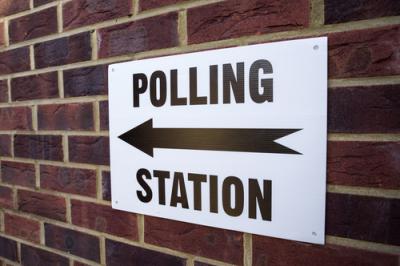After months of negative messaging and anti-development sentiment, espoused both nationally by the Government, and locally during recent local election campaigning, you could be forgiven for thinking that support for new housing has all but evaporated. Certainly, the gains made by the Liberal Democrats and independent councillors during the local elections highlights the effectiveness of appealing to the NIMBY vote as an electoral strategy. The impacts were writ large across the south east of England, where traditionally Tory councils fell to opposition control, with planning and development issues often being at the heart of these transitions.
Yet, it is also widely accepted (across the political spectrum) that housing has become increasingly unaffordable, as average house price increases have exceeded average wage growth for nearly 30 years. This manifests in trends that many of us will be familiar with, such as the inability for young people to afford rising rental costs or buy their first home. Indeed, the Office for National Statistics reports that, across England and Wales, the percentage of 20-to 24-year-olds living with their parents rose from 44.5% in 2011, to just over 51% in 2021. With house prices and rental values in parts of the country being extremely high and interest rates continuing to rise, there is a prevailing view that the housing market is ‘broken’.
Consequently, all the major political parties talk about the need to address the affordability of housing.
Various Conservative governments have put in place demand-side measures. This has included the (now ended) Help to Buy scheme and more recently, First Homes. The First Homes initiative aims to ensure a proportion of new homes are reserved for first-time buyers in perpetuity.
Uncomfortable truth
The Liberal Democrats and Labour place a greater emphasis on interventions in the rental sector, with both parties saying that, if in Government, they would invest heavily in social housing provision to improve general affordability. Likewise, each of the main parties is seeking to address perceived inequities in the private rented sector, with the Government having introduced the Renter’s Reform Bill and Labour proposing to go further, calling for rent controls and restrictions on purchases of properties by non-UK citizens.
However, the uncomfortable truth is that the unaffordability of housing in the UK is largely a feature of this country’s outright failure to build sufficient houses. For various reasons, including our planning system, we have not supplied the quantity of new homes required to address population and household growth. A recent report by the Centre for Cities highlights the UK’s poor performance over many decades. France has built nearly twice as many new homes as the UK, since 1970, despite having comparable population growth. It is perhaps no coincidence then that France (like other European countries) does not experience such severe and widespread housing unaffordability. Conversely, other Anglophone counties, such as New Zealand, Australia, Canada, have all experienced similar increases in housing unaffordability, and each constrains supply through UK-inspired Green Belt designations.
https://www.centreforcities.org/wp-content/uploads/2023/02/The-housebuilding-crisis-February-2023.pdf
The solution seems simple then, build more houses and address the basic imbalance between supply and demand. In this regard, the Conservatives, Liberal Democrats and Labour all remain (at the time of writing) at least publicly committed to seeing 300,000 homes delivered annually. Yet, the amended contents of the Levelling Up and Regeneration Bill, the Government’s recent consultation on a revised National Planning Policy Framework, and the tone of the Liberal Democrat’s local campaigning, suggests that neither of these two parties is serious about putting in place measures to actually increase the supply of homes, particularly in areas where housing unaffordability is most prevalent.
Labour has broken the mould by setting out an emerging policy position that is plainly more positive about the need for new housing. In support of this, Sir Keir Starmer indicated that councils will be required to deliver their share of the longstanding 300,000 home annual target. It is also strongly suggested that a Labour Government will support the development of land currently within the Green Belt to help achieve this. Labour has also committed to reforming the planning system, drawing a link between this and the anaemic performance of the economy. A central part of these proposed reforms appears to be the introduction of strengthened regional partnerships, needed to facilitate planning on a regional level (something which the current Duty-to-Cooperate has often failed to achieve).
Divisive issue
Of course, successfully reforming the planning system and introducing other measures to significantly increase housing supply is no easy thing. The positive impact of any reforms on housing affordability will also take years to be felt, as the imbalance between the supply and demand for homes cannot be corrected overnight. It is this very fact that makes it challenging for any government to ‘stay the course’ and implement changes that may be unpopular in the short-term. Planning reform is certainly a perennial and divisive issue in UK politics, and it is often easier to make bold claims in opposition, than it is to bring about meaningful reforms whilst in Government.
Despite this, strategists within Labour see clear political capital in repositioning the party as the ‘party for housing’, appealing to a large and growing part of the electorate that has suffered because of the failure to build sufficient homes. In openly supporting “the builders, not the blockers” and in asserting that it is existing home-owing ‘NIMBYs’ that are part of the problem, Keir Stamer’s Labour Party appears to have calculated that it is possible to secure a governing majority without significant reliance on Home County voters. These voters have been more successfully mobilised in recent years by local Liberal Democrats campaigners, often pursuing ‘anti-Tory’ and ‘anti-housing’ platforms.
Economic prospects
Moreover, Labour is also seeking to align with younger voters who often feel that the prospect of equitable renting arrangements and home ownership is something that they can no longer achieve. This taps into a wider perception, that younger people’s economic prospects are worse than those enjoyed their Baby Boomer parents and grandparents, and that access to housing is part of this trend. Electoral battlelines are therefore being drawn-up around intergenerational disparities. The Conservatives are seemingly pitching to the wealthier and established home-owing vote, whilst Labour seeks to entice disenfranchised Gen Z and Millennial voters with the prospect of eventually having a home of their own, and the socio-economic certainties this provides.
A key question is whether there are sufficient votes to be found in a pro-growth / pro-housebuilding agenda, to help Labour to secure an outright win at the general election in 2024. A year is a long time in politics, and it is possible that Labour’s move to capture the ‘pro-housing’ vote will lead to a counter repositioning of the Conservative and Liberal Democrat stances. Indeed, there are voices within the Government calling for a more positive approach to planning and housebuilding. We should not forget that as recently as 2020, the Conservatives, through the ‘Planning for the Future’ consultation, set out radical proposals for a streamlined zonal planning system.
What is clear is that Labour’s stance and recent proclamations has raised the profile of longstanding debates around housing and planning. As such, it appears that housing will be a major battleground in the next general election. This is particularly so, as the newly divergent policy position of Labour, when compared to the Conservatives and Liberal Democrats, corresponds to deep intergenerational and geographic divides.







.png)
.jpg)
















Join the conversation
Be the first to comment (please use the comment box below)
Please login to comment